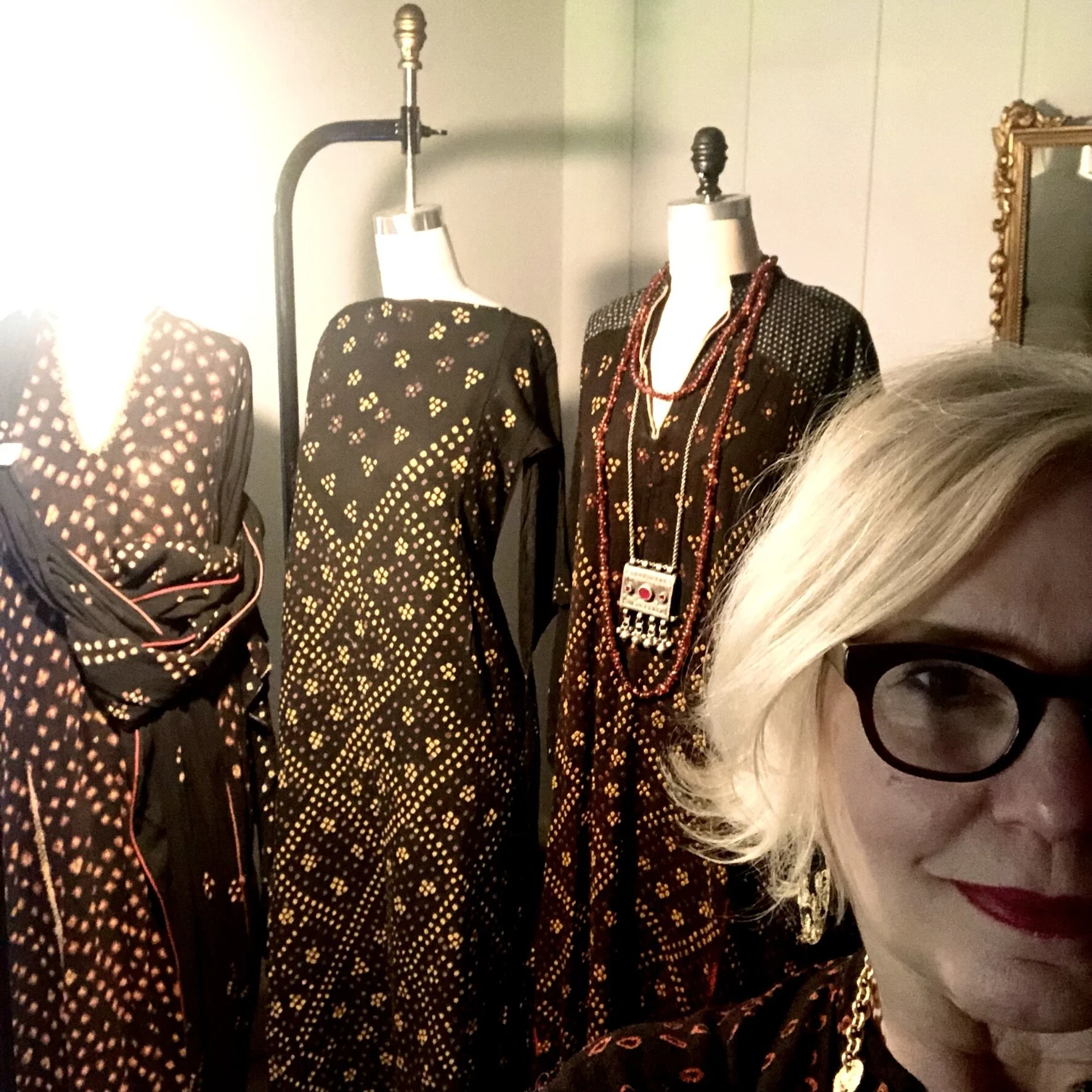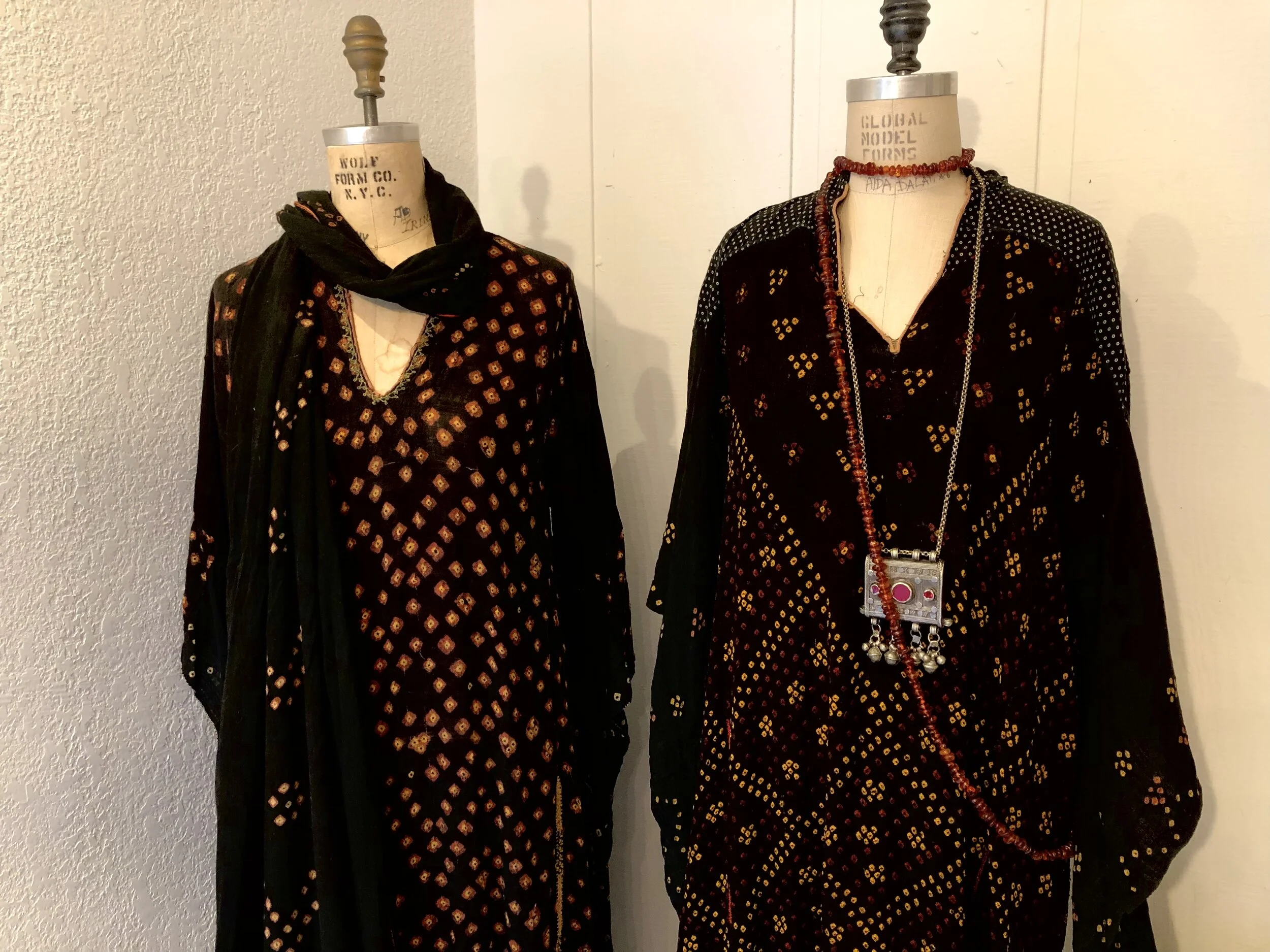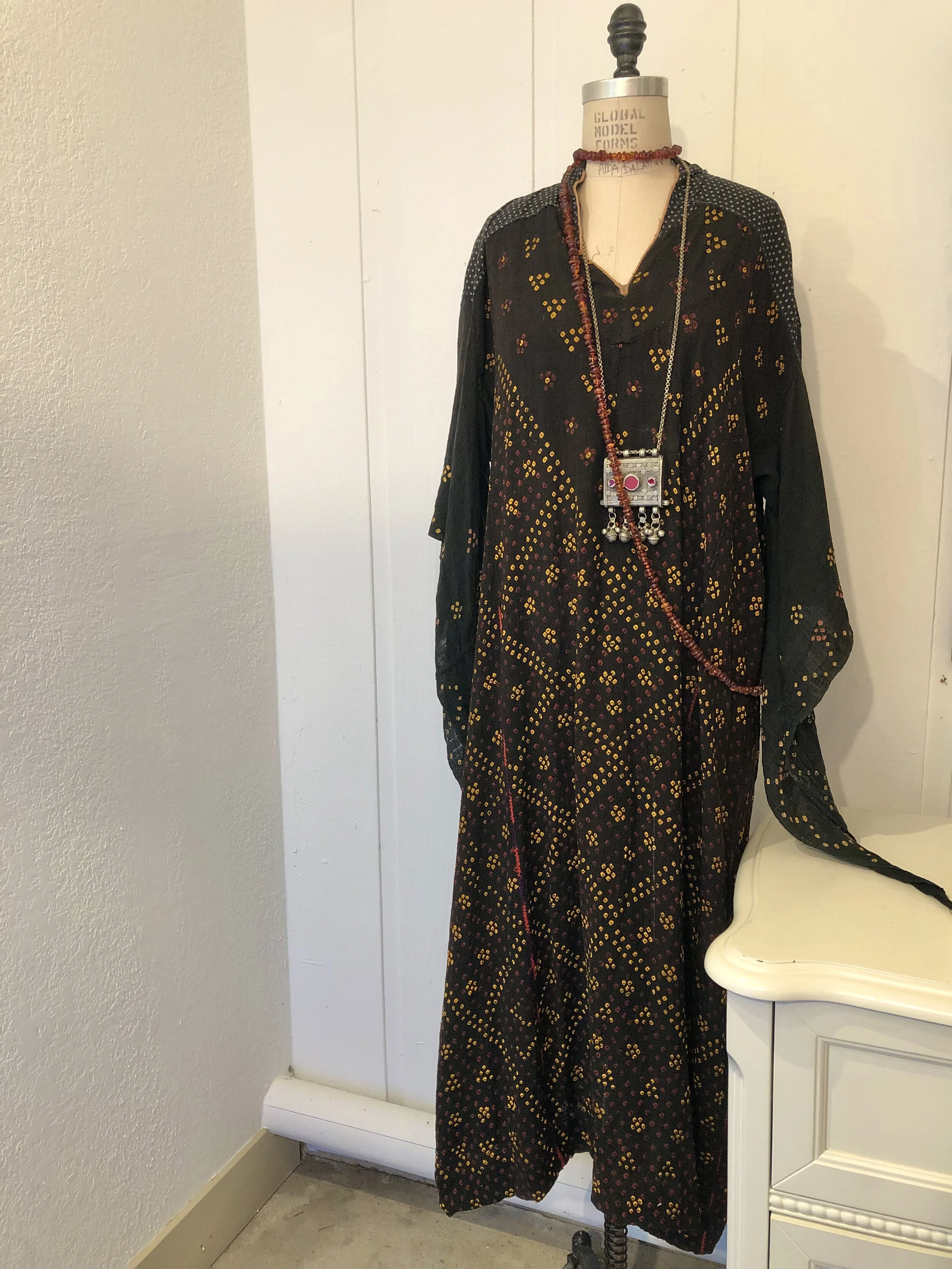حماة Hama Raw Handwoven Silk Syria Dress ثوب القز
حماة Hama Raw Handwoven Silk Syria Dress ثوب القز
🌿 Video located Below
Hama Raw Silk Dress, Syria. Similar dye process of the pelangi resist-dyed dots method. Narrow hand woven raw silk from the local mulberry tree silk worms is dipped in a yellow Turmeric color first. Once dry an intricate pattern is drawn on the textile and afterwards each point of the geometric design is tied off by a thread stuffing with a seed inside. The thread wrapping creates a circle design-dot once the textile is dipped in dye a 2nd time ( dark color, Indigo or red ) creating the most beautiful textiles and rich in layers of color. Once the threads and seeds are all removed the textile takes on a subtle nubby texture which is beautiful to the touch.
Most probably a cottage industry, a studio or professional was commissioned to make these intricate double and sometimes triple dyed ( seed method ) pattern designs. Inventory is defined by ready dresses that have not had a neckline cut or fashioned-couched or embroidery. Once the dress is allocated to a trousseau only then is the neckline unsealed.
Sleeves are long and feature tails ( wings in Arabic جناح ) . The whimsical sleeve design create a fashion statement especially when they are combined with an over jacket which is generally a felted Jacket couched with gold cord. Sleeves are especially beautiful during socials and dancing. The sleeves also have a practical function like help with child ( swaddling) or crop carrying during harvest.
The making of the beautiful and rare dresses disappeared after the Hama troubles of 1982 along with many family owned and operated weaving businesses in the old part of the city. Of course the changing climate ( global warming) drought, and poor agriculture management set forth mainly by incompetents that began from the top and down to the local municipalities. The Ottoman’s are also to blame for the disappearance of so many trees in this region as they proceeded to clear the mulberry trees in 1836 and substituted the land with other crops that were already growing in the south of Syria just fine. Even the French occupation 1920-1956 had a part to play. They thought to move the silk worms to France to supplement their own production of luxury goods and in some cases succeeded as they planted one million trees between Beqqa Valley and Safita but the silk proved to be more course and most of the harvest was utilized by Aleppo for the manufacturing of Damask and Men’s wear. Damascus brocade research and local silk threads is in progress .
Syria Heritage and Costume Collection. Hama Silkworm Triple Dyed Lost Dresses. How just one Syrian dress can tell her story.







